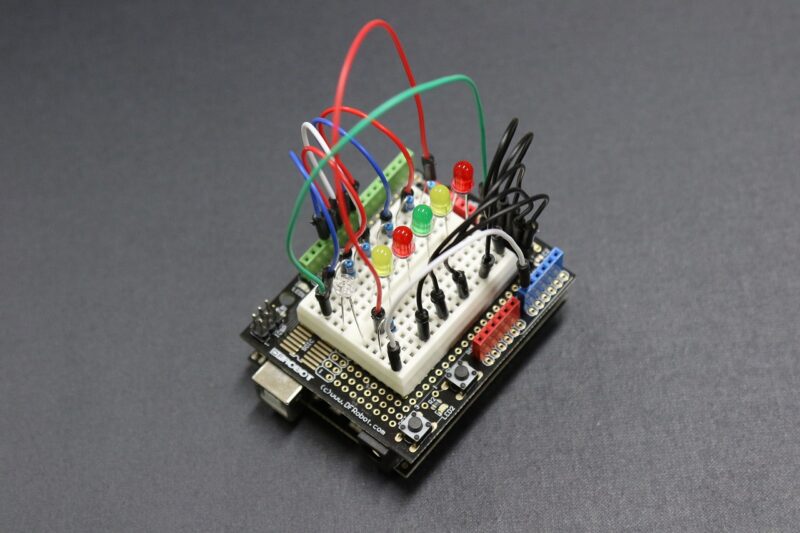How to Choose the Right Arduino Kit for Your Skill Level and Project Goals
November 13, 2024

Arduino has become a cornerstone for hobbyists, educators, and professionals looking to dive into the world of electronics and programming. Offering an accessible platform for learning and creating, Arduino kits have proliferated, providing a range of options tailored to different skill levels and project goals.
So, how do you navigate through the multitude of choices to find the right Arduino kit for your specific needs? In this comprehensive guide, we’ll break down the key considerations when selecting an Arduino kit and provide insights into popular kits for various skill levels.
1. Understanding Arduino Kits
Before we delve into the selection criteria, it’s essential to understand what an Arduino kit typically contains. Most Arduino kits include the following components:
- Arduino Board: This is the microcontroller at the heart of the kit, and it’s where you upload your code and connect components.
- Breadboard: A tool for building prototypes without soldering, allowing for easy modifications to your circuit.
- Components: Various sensors, LEDs, resistors, and other electronic parts you’ll use to create projects.
- Cables and Connectors: Necessary for connecting components and making electrical connections.
- Instruction Manual or Guide: Often includes tutorials and project ideas specific to the kit.
Now that we have a grasp of what to expect, let’s explore how to pick the right kit for you.
2. Assessing Your Skill Level
The first step in choosing the right Arduino kit is to accurately assess your skill level. Arduino kits are available for beginners, intermediates, and advanced users.
– Beginners: If you’re new to programming and electronics, consider a beginner kit that includes comprehensive tutorials and projects. These kits usually come with clear instructions and all necessary components to get started with fundamental projects.
– Intermediate Users: If you have some experience, look for kits that allow a bit more complexity, featuring components like sensors and motors for creating dynamic projects.
– Advanced Users: For experienced makers, consider advanced kits that offer complex sensors, wireless communication capabilities, and larger components for ambitious projects.
3. Defining Your Project Goals
Next, think about what you want to create with your Arduino kit. Potential project goals could include:
- Learning Basics: Focusing on basic programming and circuit concepts.
- Robotics: Interested in creating programmable robots.
- Internet of Things (IoT): Exploring connected projects that communicate over the internet.
- Home Automation: Building devices that help control home environments.
By identifying your project goals, you can select a kit that provides the right components and tools.
4. Recommended Arduino Kits for Different Skill Levels
To help you make an informed decision, here are some recommended Arduino kits categorized by skill level:
For Beginners:
– Arduino Starter Kit: This kit typically includes an Arduino board, a variety of components, and a project book to help beginners complete multiple projects.
For Intermediate Users:
– Elegoo Mega 2560 Starter Kit: Offers more components, including sensors and modules, allowing for more complex projects than a standard beginner kit.
For Advanced Users:
– Arduino Mega 2560 Project Bundle: A complete bundle with advanced sensors and components, suitable for ambitious projects like home automation systems.
5. Price Range and Budgeting
Arduino kits can vary widely in price, from budget-friendly beginner kits to more comprehensive advanced kits. Establishing a budget ahead of time can help narrow down your choices. Typically, beginner kits can range from $30 to $100, while advanced kits may stretch from $100 to $300 or more depending on the components included.
Keep in mind that investing in a good quality kit could provide better long-term value in terms of durability and the range of projects you can accomplish.
6. Community and Support Resources
Before making a purchase, check the availability of support resources for the kit you’re considering. A thriving community can provide you with:
- Online forums for troubleshooting and sharing projects.
- Tutorials and project ideas shared by other users.
- Customer support from the kit manufacturer.
Resources like Arduino’s own website, Github, and YouTube are also excellent places to find additional guidance and inspiration.
7. Conclusion: Making Your Decision
Choosing the right Arduino kit involves evaluating your skills, understanding your project goals, budgeting wisely, and seeking out strong community support. By clarifying your needs and doing thorough research, you can select a kit that provides the tools you’ll need to embark on an exciting journey in electronics and programming. Remember, the right kit can make a significant difference in how quickly and effectively you can reach your project goals. Happy Building!
Whether you’re looking to build your first project or dive deeper into advanced applications, the right Arduino kit can serve as a gateway to endless possibilities in the tech world.





